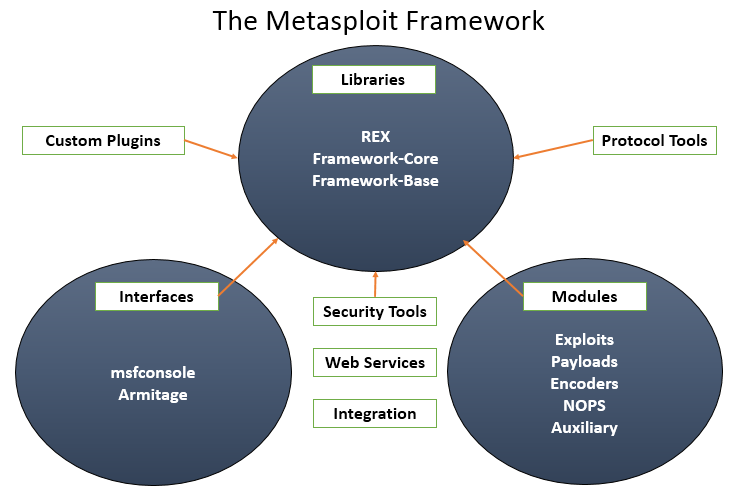The Metasploit Framework (MSF) is an open source tool that was designed to facilitate penetration testing. Written in the Ruby programming language, it uses a modular approach to facilitating exploits during the exploitation phase in kill-chain methodology. This makes it easier to develop and code exploits, and it also allows for complex attacks to be easily implemented.
The following screenshot depicts an overview of the MSF architecture and components:

The framework can be split into three main sections:
- Libraries
- Interfaces
- Modules
MSF is built using various functions and libraries, as well as a programming language such as Ruby. To utilize these functions, first the penetration testers must understand what these functions are, how to trigger them, what parameters should be passed to the function, and what the expected results are.
All of the libraries are listed in the /usr/share/Metasploit-framework/lib/ folder, as shown in the following screenshot:




